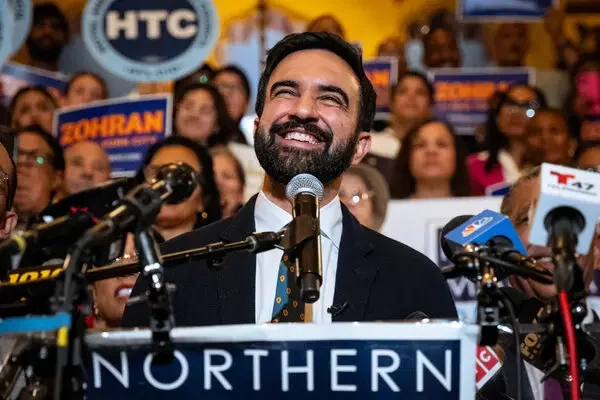What Zohran Mamdani’s Victory Means for the Future of Politics
In 1991, the Cold War finally came to an end as the Soviet Union dissolved. Clarence Thomas’s confirmation hearing raged in Washington D.C. Nirvana’s iconic Nevermind album hit record stores. Mario Cuomo sat in the New York Governor’s Mansion. And in Kampala, Uganda, Zohran Mamdani was born.
Just 34 years later, Mamdani would go on to defeat Mario Cuomo’s son, Andrew Cuomo, in the New York City primary, putting him on the path to be the youngest ever mayor of a major U.S. city (a title previously held by then-42 year old Eric Garcetti of Los Angeles). When Mamdani won his decisive victory over the controversial former Governor of New York last month, his age was just one of the many aspects of his campaign that sparked national discussion. His leftist politics, his Muslim faith, and his bold vision for New York City inspired voters– and raised uproar.
What does this tell us about young candidates like Mamdani? This race was not only unique because of the ages of the candidates running. The spectre of Andrew Cuomo’s last time serving in public office, which ended in him resigning amidst a sexual harassment scandal, cast a heavy pall over the candidacy of a man many saw as the obvious successor to the Mayor’s Office. Mamdani’s progressive policies, including a rent freeze and a proposal to make city buses free, attracted buzz and attention from voters who may otherwise have ignored the primary conversation. The race also drew national attention and coverage as it became a flashpoint for ongoing conflicts about how the Democratic party should address the war in Gaza.
No matter one’s personal views of Mamdani’s policies, it’s undeniable that the former Assemblyman mobilized a voter base that up until this point had been underrepresented in New York primary elections. In 2021 turnout among eligible voters was lowest for the 18-29 age group. Although final numbers for 2025 aren’t yet available, we know that 18-29 year olds accounted for a huge chunk of early voters, whose votes trended overwhelmingly towards Mamdani. His campaign activated voters who have historically sat out of primary and municipal elections, radically shifting the electoral landscape and laying the foundation for his upset.
Mamdani also offered something that few in New York would have expected even a year ago: a truly competitive primary. Across the country, young candidates are lining up to primary established politicians in both the Republican and Democratic parties, spurring competitive primary seasons that force every candidate to get specific about policy and promises– not just cruise to an easy victory on the back of name recognition or via an uncontested race.
Young candidates certainly have the potential to motivate young voters who are frustrated with legacy politics, but age alone isn’t enough to inspire the sort of movement Mamdani has built in New York. Mamdani is the face of a movement and a moment that is reaching a crossroads, and his fate may impact hundreds of other young candidates whether he wants it to or not. Is he a wunderkind progressive with the ability to bring together coalitions and enact meaningful policy change? Or is he an inexperienced 33-year-old with a good digital ground game and not much else to offer?
Only time will tell. Mamdani still has a general election to win with the threat of third-party challengers looming. However, no matter the outcome, the impact Mamdani had as a candidate under 40 cannot be discounted. A new generation of leadership doesn’t just mean swapping older candidates for younger with the same platform. It means using that youth to activate voters who are disengaged or disillusioned from the political process– something that any candidate for office, whether progressive, moderate, or conservative, can benefit from.
